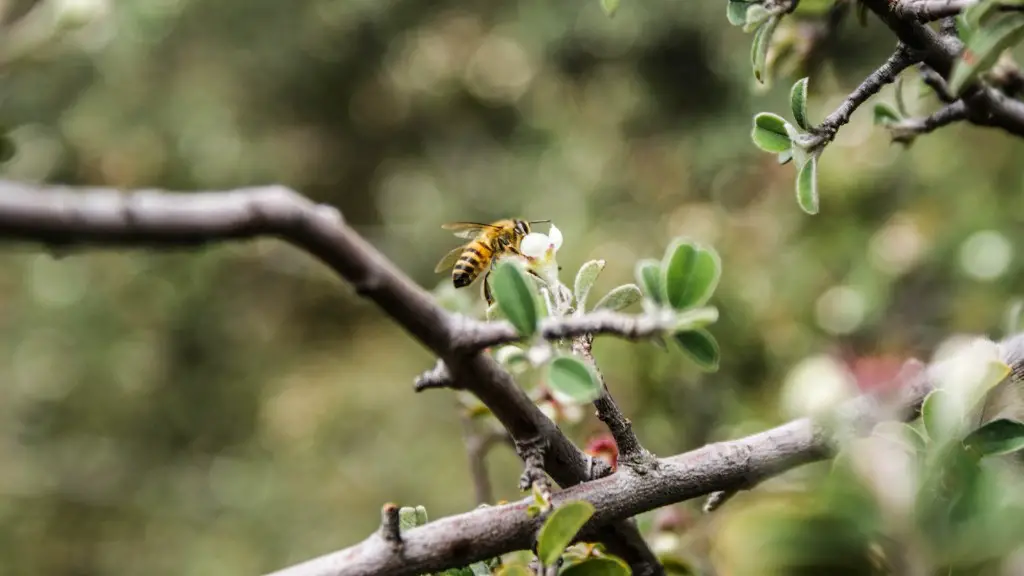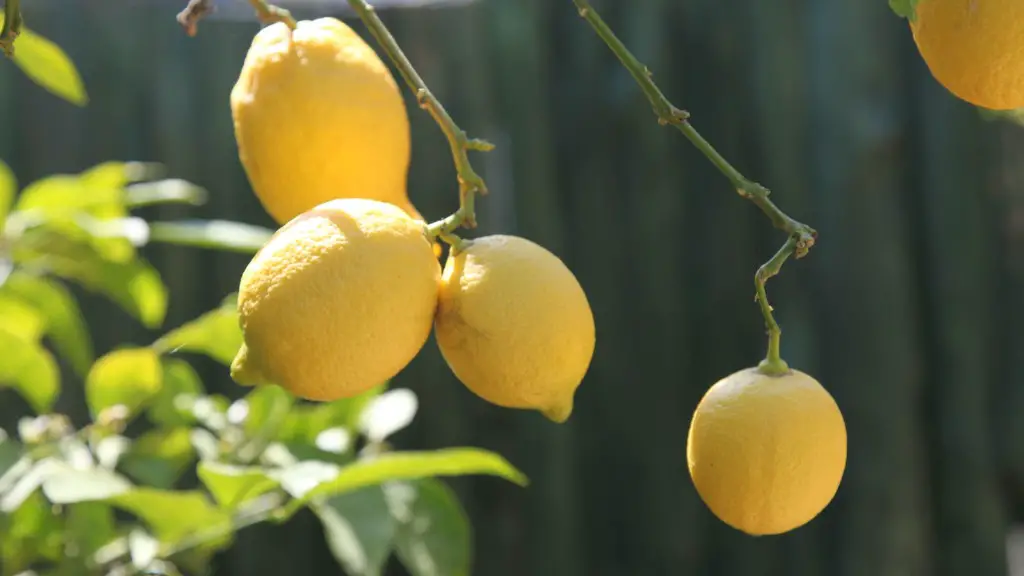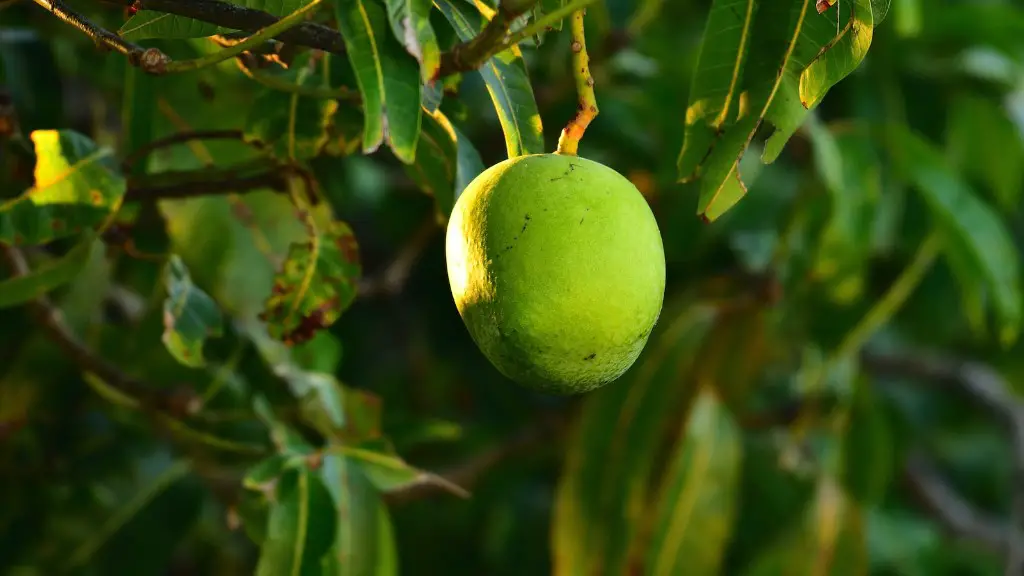It is possible to bring an apple tree back to life if certain steps are taken properly. Generally, when an apple tree has suffered from damage or disease, the best course of action is to prune away any dead or diseased branches and check the soil quality. Here’s how to bring an apple tree back to life.
1. Inspect Your Tree: Begin by carefully inspecting your tree for signs of disease or damage. Look for any dead or broken branches, discolored leaves, or any other noticeable signs that suggest an infection or damage. If diseased and dead branches exist, they should be pruned away accordingly.
2. Check the Soil: An apple tree should be growing in quality soil, with all essential nutrients included in the mix, and sufficient drainage to allow excess water to escape. If the soil quality is poor, add in organic material such as compost, and also consider introducing an appropriate soil amendment.
3. Fertilize the Tree: After you have checked the soil, fertilize the tree accordingly. Apple trees prefer ammonium sulfate or ammonium nitrate for their nitrogen needs, and potassium sulfate for their potassium needs. These should be applied in spring or early summer.
4. Provide Enough Water: Adequate water is essential for a healthy apple tree. Make sure to provide enough water for the tree throughout its growth stage, especially during periods of drought. Make sure that excess water can escape too.
5. Use Proper Mulch: Mulch can help to keep the apple tree’s roots cool in summer and warm in winter. Layers of mulch should be used to cover the trees root area, and can also help to retain moisture in the ground. Bark mulch is typically recommended.
6. Control Pests and Diseases: The best way to manage pests and diseases is to monitor regularly and take corrective action when required. Look out for early signs of destruction, such as discolored leaves and weak branches, and then apply appropriate chemical compounds to remove them.
7. Provide Enough Sunlight: An apple tree should receive plenty of sunlight, particularly full sun during the growing season. If the tree is receiving too much shade or not enough sunlight then its growth may be stunted, or flowering and fruiting problems could occur.
Winter Maintenance
Winter is a crucial time for apple trees. Not only does it help get rid of excess foliage and pests, but it also helps keep the soil hydrated and aids in nutrient replenishment for the coming season. In winter, it is important to mulch to prevent freezing of the root zone, and prune away deadwood in order to ensure no further damage. Additionally, soil should be moistened deeply with 10 to 20 gallons of water around the trunk of the tree.
Fertilizer shouldn’t be applied in winter, but instead should be held off until early spring when the soil has been warmed. During the winter season, a general rule of thumb is to refrain from any bark-scratching activities as this can cause more harm than good.
A light spraying of water on the tree and its foliage can also help prepare it for a cold winter ahead. A gentle breeze towards the end of winter can help remove any dirt or dust from the bark, which is a great preventative measure against diseases and pests.
During the winter months, it is also important to check for diseases and pests. Hold off on fertilizer application until the winter season is over to prevent any further damage to the apple tree.
Spring Care
As spring approaches, it is time to start providing your apple tree with ample care in order to ensure a healthy fruiting season. Spring is the perfect time to apply fertilizer, as this helps replenish the soil with essential nutrients for the coming season. Applying a phosphorus and potassium-based fertilizer helps stimulate root growth and encourage healthy foliage.
As the days get longer and warmer, pests such as aphids and spider mites will start to become active. This is the perfect time to start applying sprays designed to control various pests and diseases. Check the tree’s foliage and bark periodically, as well as the soil around its base, in order to detect any pest activity.
In springtime, also pay attention to the amount of water the apple tree receives. Irrigation schedules should be adjusted according to the stage of the tree’s growth. The tree should receive about 2 inches of water each week during the growing season in order to sustain healthy growth.
At the end of the winter and early spring months, the apple tree should also be pruned accordingly. Pruning helps to control growth and keep plants healthy and strong. All dead, diseased, and weak branches should be removed, and be sure to prune away any crossing branches.
Finally, the end of spring is the perfect time to assess and harvest the fruits. Apples should be picked when they are ripe and of optimal size, with the stem still attached. Be sure to rotate between all the tree’s fruit to promote healthy, continuous growth.
Summer Maintenance
During the summer, apple trees need to have their needs met in order to remain healthy and lush. With adequate soil moisture and proper fertilization, apple trees should last and thrive. Watering is vital during the summer, as the tree needs around 2 inches of water each week, depending on the weather. Be sure to adjust the irrigation schedule when rainfall is plentiful.
Fertilizer should be reapplied at the end of May and throughout the summer, and again towards the end of August. A potassium-based fertilizer is important for trees that need additional nutrients and increased flavor in their fruits. However, be sure not to overfertilize as this can cause root burn, reduced pollen production and weak fruit formation.
In summer, the apple tree’s foliage should be checked more regularly for signs of pests or diseases. Insects such as aphids and borers should be eliminated along with the use of insecticides and fungicides. If a pest infestation is detected, contact a local pest control specialist or a garden center as soon as possible.
The soil should also remain cool during hot summer days. A layer of mulch spread around the base helps to reduce soil temperature in summer and also helps to retain moisture.
At the end of summer, be sure to assess the tree for any signs of wear and tear, and prune away any dead or weak branches. This will make sure that the apple tree remains healthy for the upcoming season.
Fall Maintenance
When the fall season arrives, apple trees need to be prepared for the upcoming winter months. As the leaves start turning yellow, it is important to provide a good watering and fertilization system. A deep watering should take place in early autumn and again towards the end of the season. This helps to replenish the soil with essential nutrients and also helps to reduce the effects of soil compaction.
In fall, it is also important to check the trees for any signs of pests or diseases. If there are any signs of infection, treat the apple tree with insecticides and fungicides as soon as possible. Additionally, it’s important to prune away any dead or weak branches, and also to thin out overcrowded foliage.
Fertilization should also be done during autumn. Although soil should still remain damp, a light nitrogen fertilizer can be applied as it will help increase the fruit’s flavor. A potassium-based fertilizer will also help to prepare the tree for winter.
As the winter season approaches, it is important to make sure that the apple tree is able to withstand the cold climates. Fall is the perfect time to apply a hefty layer of mulch to protect the tree’s roots. Additionally, winter protection measures such as wrapping and wrapping should be taken. Finally, a light spraying of water on the tree and its foliage can also help prepare it for a cold winter ahead.




